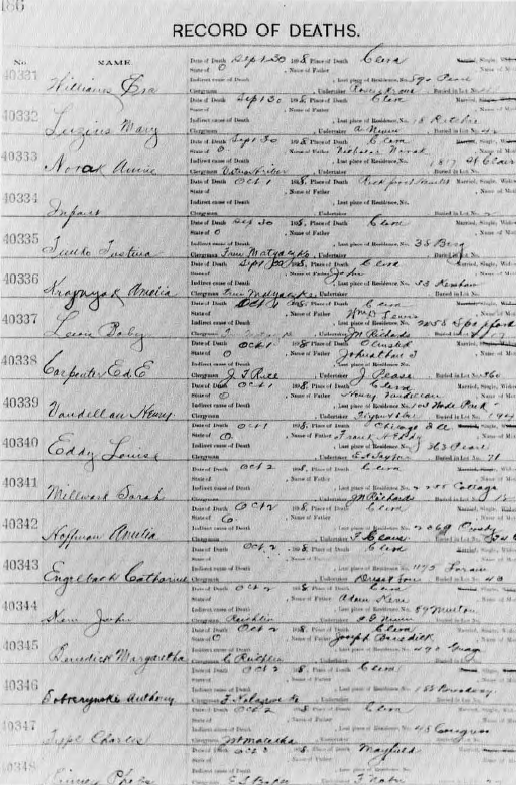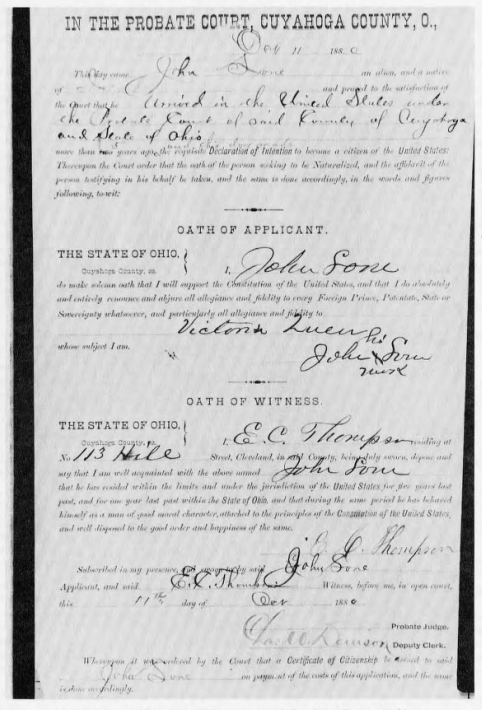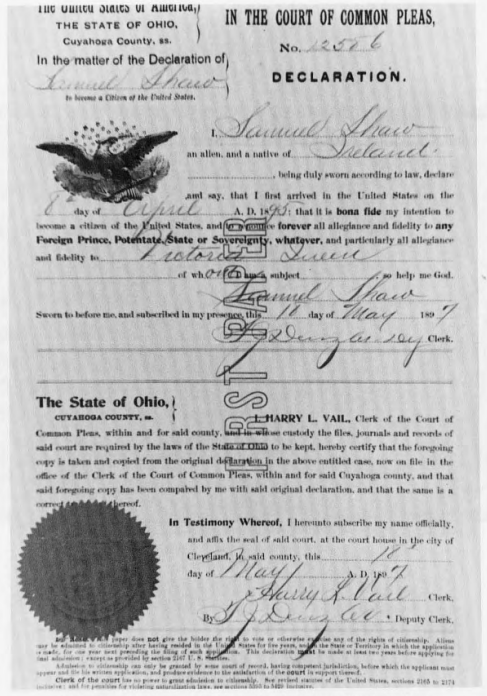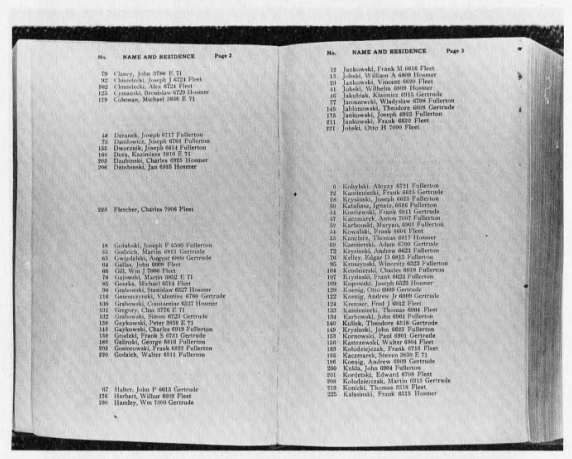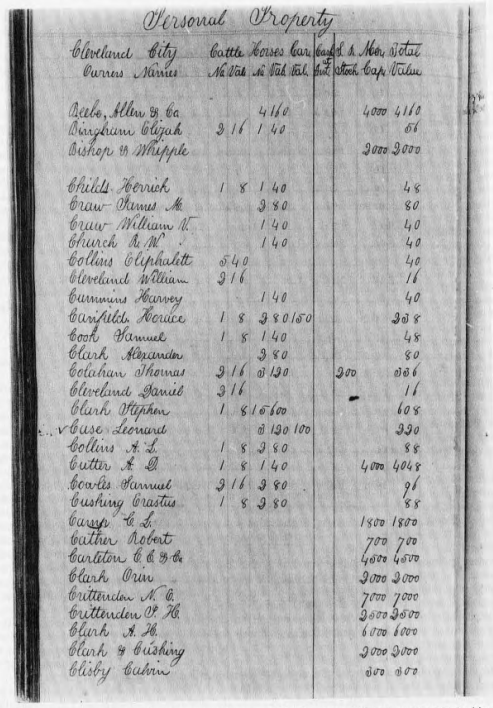Part II. How to Study Your Neighborhood
County Records
Jeanne Kish
The records of the county in which a city is located can be a treasure-trove of valuable information for the researcher willing to devote the time and energy to seeking it out.
Most county records chronicle instances from the daily lives of local residents. Here reside the records of marriages, births and deaths as well as how much tax was paid by an individual on a specific piece of property; who applied for citizenship in the Common Pleas Court; who could vote; and who received goods and/or money when a will was probated.
In some cities county records of the past and present are housed side by side. In Cuyahoga County, a separate archives division of the county government is responsible for the preservation of county records and materials pertaining to county business, and is charged with making these records and materials available to the public.
Since there is not sufficient space here to provide a comprehensive look at the records of the county, a few examples of the records available through the archives and other county offices will have to suffice—along with some practical pointers concerning how these records may aid the researcher in gathering additional pieces of the puzzle that make up a neighborhood. Indeed, it is possible with the help of county records to reconstruct in some detail the lives of the residents of a given neighborhood.
One thing that should definitely not be overlooked on a visit to the Cuyahoga County Archives is the county’s excellent collection of ward maps which, besides being very important in the use of certain county records, can also be helpful in defining neighborhood boundaries. The boundaries of the political wards within a city shift and change over time. What was the 14th ward in 1880 may have been incorporated ten years later into the 25th ward or even split between two different wards. Some county records—such as death records before 1900—were recorded by ward.
Remember, also, that the records housed with the County Archives will be those of a historical character. More recent records must still be researched at the county’s administrative facilities. As each division has its own set of records, the researcher may have to seek information at several sources.
In terms of the kind or degree of information they contain, certain county records are more valuable than others. Early records of marriage licenses issued by the county are sketchy, but later include such helpful details as place of residence, names of mother and father, age, place of birth, etc. Birth records are available through the city rather than the county.
County records chronicle deaths in a still more detailed manner. Early death records for the county were kept by ward. For each six-month period ending in July and December, the county ward leader would record the deaths in script, attesting that to his or her knowledge these were the reported deaths which took place in the ward during that six-month period.
The following information about the deceased is generally available in these records:
a. Name
b. Place and date of birth
c. Age
d. Occupation
e. Name of parents
f. Disease or cause of death
g. Race
h. Place of residence
After 1900, this additional information was usually recorded:
a. Religious affiliation
b. Attending physician
c. Clergyman
d. Undertaker
e. Place of burial (including cemetary [sic] name, lot and grave number).
Deaths in the county after 1900 were also recorded in the month in which the person died rather than by ward. All persons who died on December 8, 1905, for example, are recorded together.
County death records can provide a vivid picture of life in a neighborhood. For example, in Cleveland’s Broadway-Fleet neighborhood, 24 children between the age of 15 years and younger are recorded as having died from diptheria [sic] in 1885. Children also died from summer complaint, unnamed fevers, typhoid fever, cramps and convulsions. A total of 98 children under the age of 15 years died in the Broadway-Fleet area in this same year. Many inferences about neighborhood life can be drawn from such death records, e.g., that lack of sanitation and poor living conditions may have been the reason for a high mortality rate among children. (Sometimes poignant stories are suggested in these records. The McFarden family buried three children ages 1, 3, and 7, all victims of an unknown fever, within six months in 1875; and the Guscott, Patton and Kendrix families each buried two children, all below the age of 4, that same year.)
By following the death records over a period of time, one can see how improvements in sanitation and general living conditions coupled with advancing medical knowledge resulted in changes in the patterns of deaths. By 1890, the number of diptheria [sic] deaths had dropped to four.
Sometimes the death records can even present semi-verification of a local legend. Some older residents of the Fleet Broadway area tell the tale of a slap of pig iron which was buried in lieu of a body after an industrial accident in the mills. According to the story, a worker in the mill fell into a furnace of molten pig iron and, because the body could not be retrieved, the family buried a bar of the pig iron which was poured after the accident. Perhaps this story is apochryphal [sic], but the county death records do record a man’s death in 1885 as a result of falling into a mill furnace, which may be the origin of this story.
Other types of records are also available from the county, such as tax duplicates for county residents, which list the amount of taxes paid on real property during a given year. The information includes:
a. The owner’s name
b. The original lot and sub-lot numbers
c. The front and back footage in feet
d. The name of the street where the property is located
e. The value of the lot
f. The state, county, road, town and school taxes collected that year.
Also available through the county are the records of petitions for citizenship from both the Common Pleas Court and the Probate Court. These records provide the following information:
a. Name
b. Date of birth and place of birth
c. Date of arrival in America
d. Date when citizenship intent was declared
e. Occupation
f. Former country of residence.
The records of the Court of Common Pleas are much more complete than those of the Probate Court. Naturalization information for later periods may be obtained from the U.S. Naturalization Department.
Additional county records include county road records for the laying and construction of county highways and city streets; architectural files, which consist of drawings, blueprints and renderings of county structures both private and public, past and present; county election rolls, which list individuals by name and street address according to ward; and coroner’s reports, which list the deaths investigated for various reasons. And still other county (and city) records such as urban planning records and county commissioner agendas and meeting minutes are also available for public use.
All of these records provide the researcher with one more valuable resource in reconstructing the story of historic neighborhood life.
